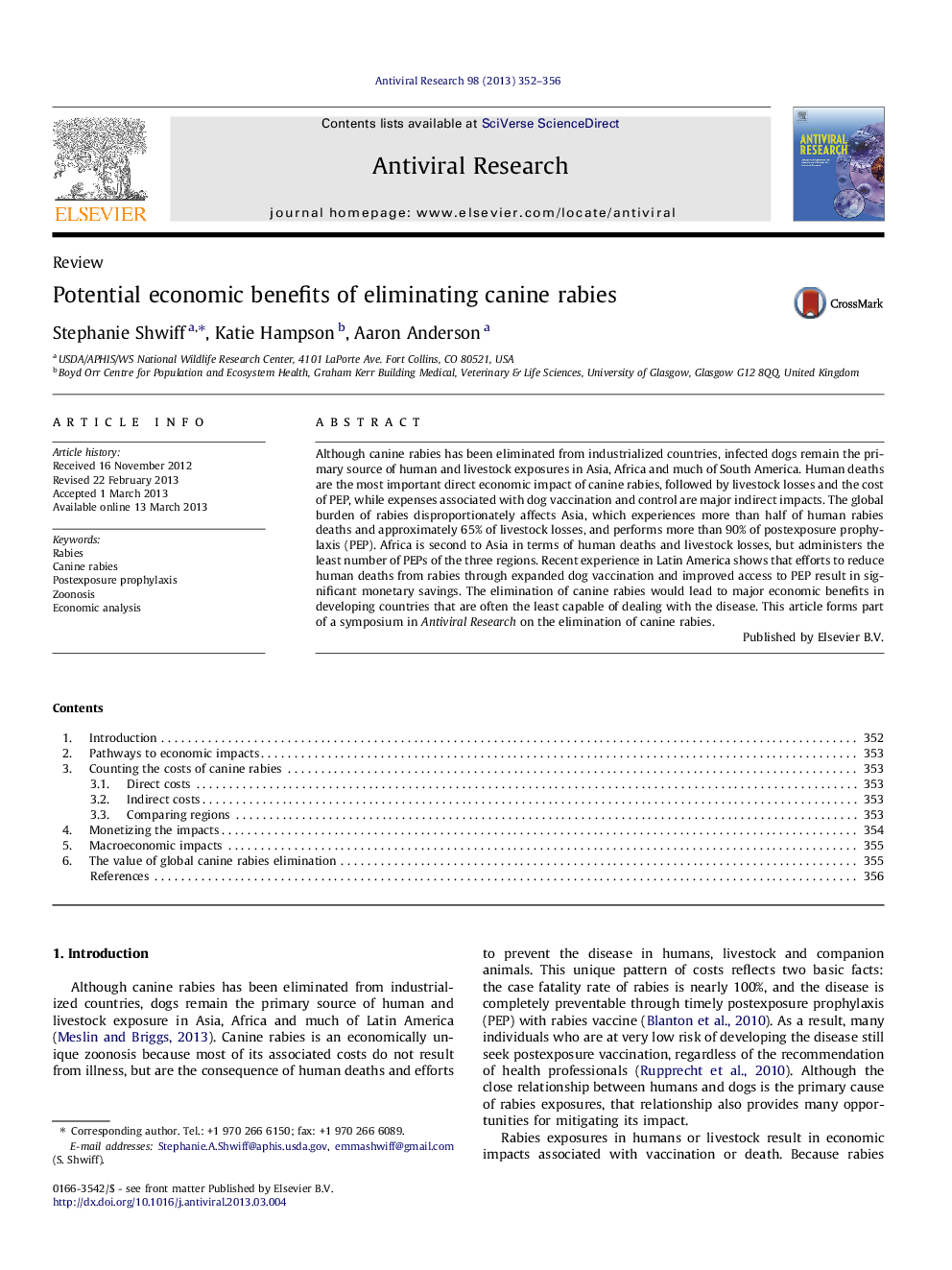| Article ID | Journal | Published Year | Pages | File Type |
|---|---|---|---|---|
| 2510205 | Antiviral Research | 2013 | 5 Pages |
•We estimate the economic impacts of canine rabies in Latin America, Africa, and Asia.•The global burden of rabies disproportionately affects Asia.•We estimate the annual cost of the disease to be about $530 million.•Elimination of canine rabies would lead to major economic benefits in developing countries.
Although canine rabies has been eliminated from industrialized countries, infected dogs remain the primary source of human and livestock exposures in Asia, Africa and much of South America. Human deaths are the most important direct economic impact of canine rabies, followed by livestock losses and the cost of PEP, while expenses associated with dog vaccination and control are major indirect impacts. The global burden of rabies disproportionately affects Asia, which experiences more than half of human rabies deaths and approximately 65% of livestock losses, and performs more than 90% of postexposure prophylaxis (PEP). Africa is second to Asia in terms of human deaths and livestock losses, but administers the least number of PEPs of the three regions. Recent experience in Latin America shows that efforts to reduce human deaths from rabies through expanded dog vaccination and improved access to PEP result in significant monetary savings. The elimination of canine rabies would lead to major economic benefits in developing countries that are often the least capable of dealing with the disease. This article forms part of a symposium in Antiviral Research on the elimination of canine rabies.
